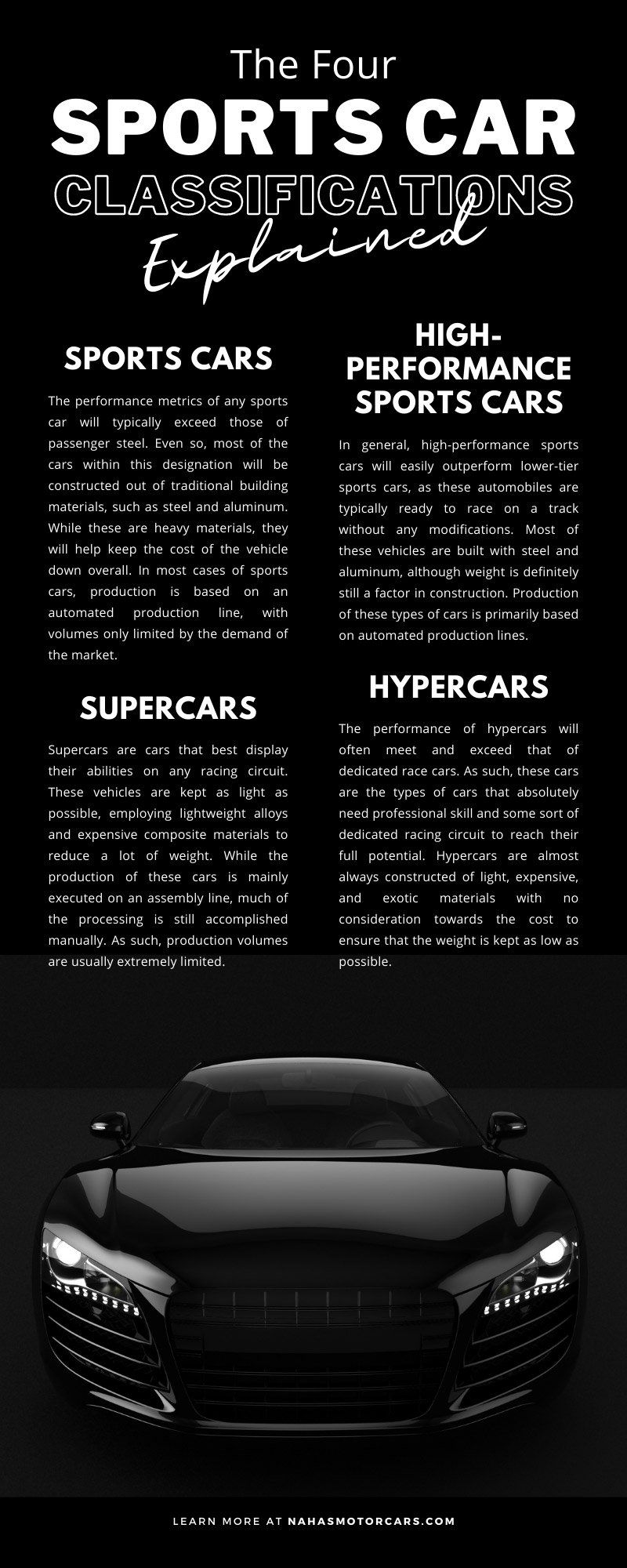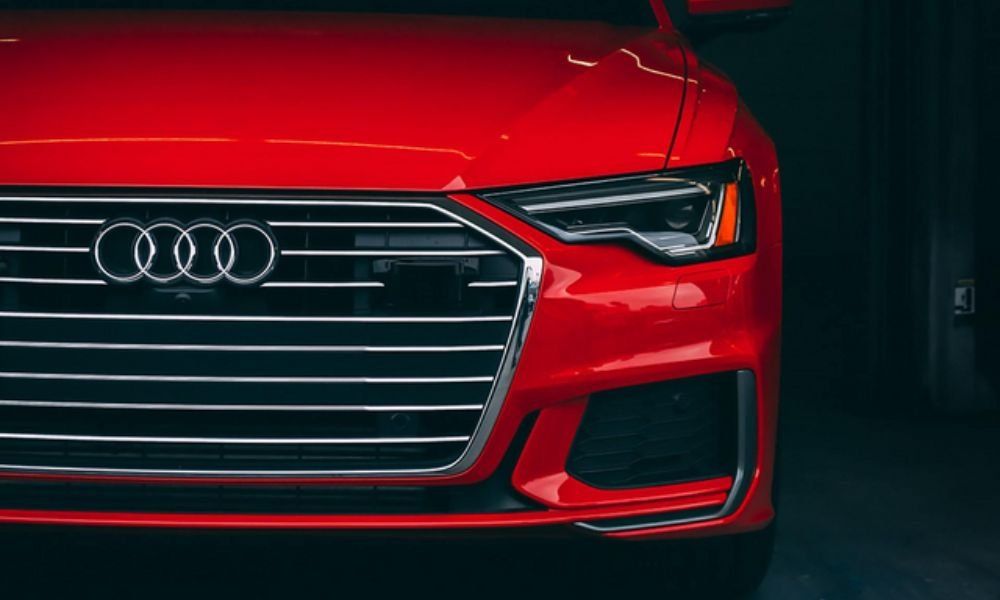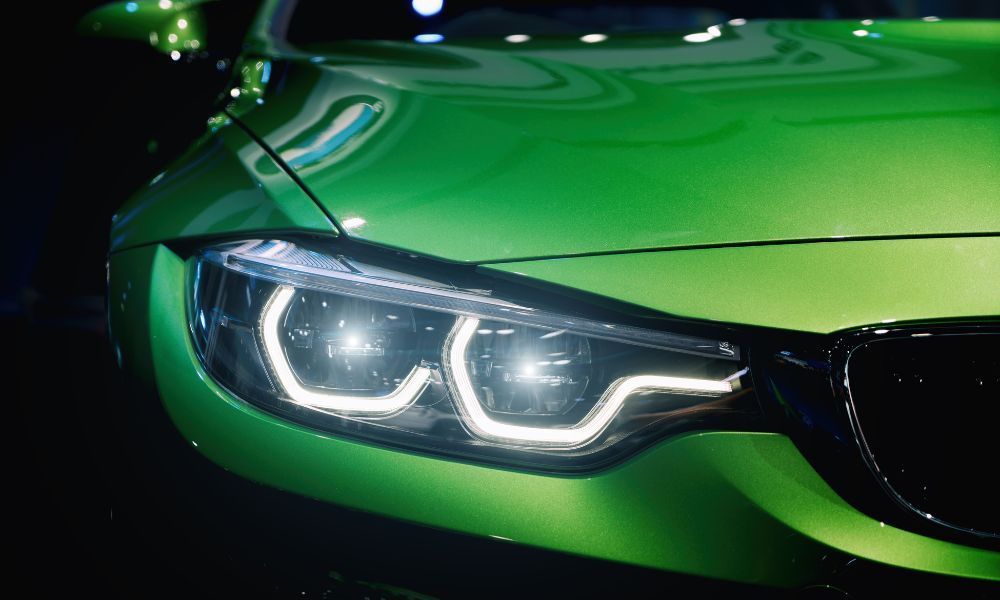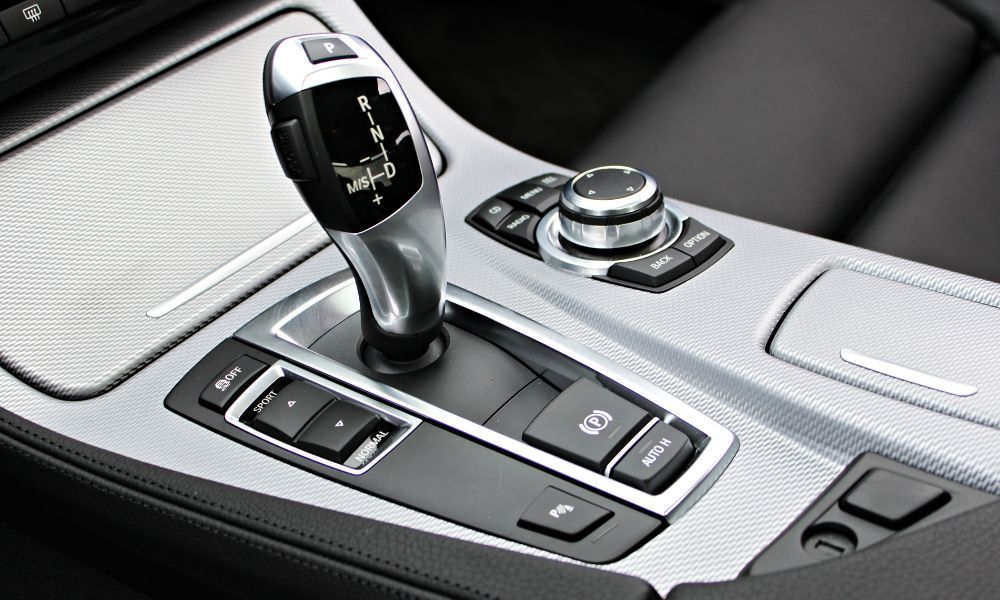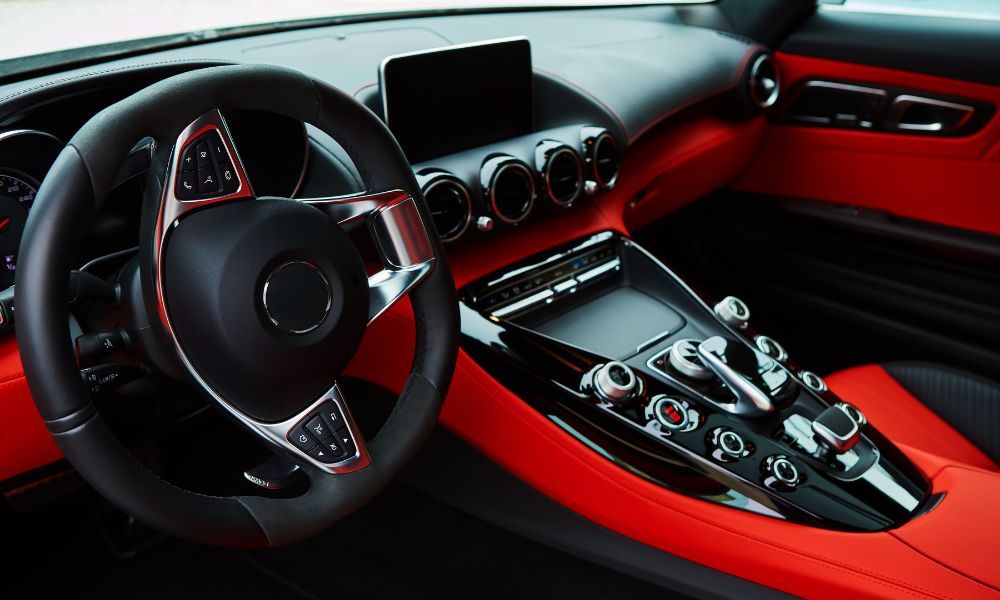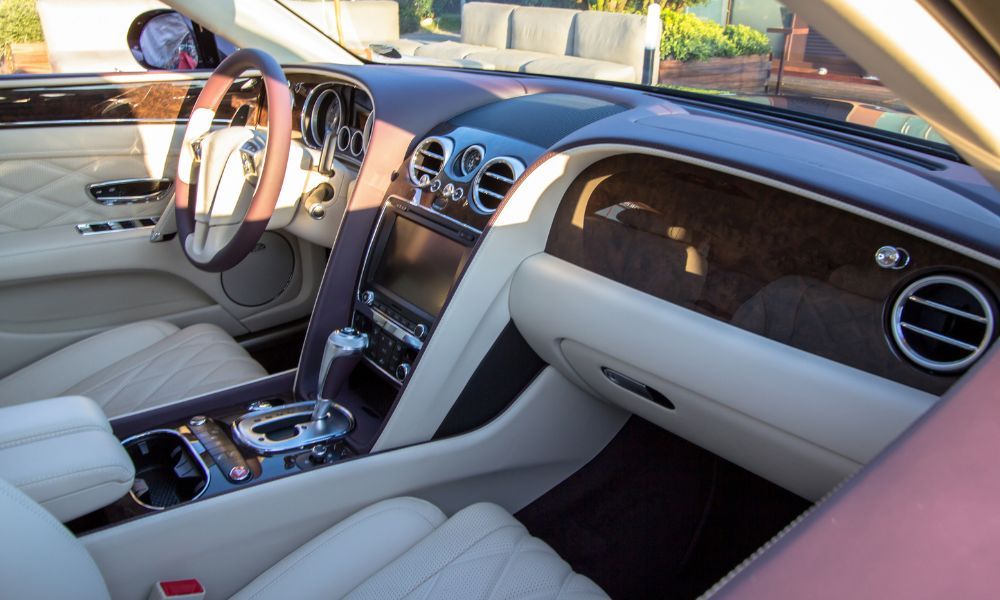The Four Sports Car Classifications Explained
Over time, the term “sports car” has grown to mean many different things. In fact, what many people do not realize is that “sports car” is only a general term used to describe cars that pertains to a subgroup of cars. Usually, these cars will value performance, speed, luxury, and comfort over fuel efficiency. These are the type of cars that appeal to most car enthusiasts and are also typically higher in price because of this interest. In the case that you are interested in sports cars, this article will cover:
- What exactly is a sports car
- The four sports car classifications
- How to know if you should get a sports car
Here are the four sports car classifications explained!
What Is a Sports Car?
Before we talk about the various sports car classifications, it is necessary for us to explain what exactly a sports car is. In general, the designation of sports car refers to any type of car that puts an emphasis on performance statistics such as handling, acceleration, top speed, or any of the other metrics that sports cars use to designate performance. While this may seem like a small subset of car characteristics, it may surprise you to find out that this is actually a very broad definition, with many different types of cars fitting into this category. Today, much of the sports car designation is based equally on both the aesthetic of the car and the car's statistics.
Common Characteristics of Sports Cars
While the definition of a sports car is very dynamic, most often, the characteristics are relatively the same between most models of cars. One of the most common characteristics of any sports car is the seat layout. When looking at the seating layout, most sports cars will have two seats and no back seating area. Another common characteristic of most sports cars is the engine and drivetrain layout. Many sports cars will use a rear-engine layout. While it is not amazing in terms of space usage, this engine layout contributes to more power and better handling.
What Are the Four Sports Car Classifications
While there are many common traits that most sports cars share, some boundaries still separate the different echelons of sports cars. Here are the four different classifications of sports cars.
Sports Cars
The performance metrics of any sports car will typically exceed those of passenger steel. Even so, most of the cars within this designation will be constructed out of traditional building materials, such as steel and aluminum. While these are heavy materials, they will help keep the cost of the vehicle down overall. In most cases of sports cars, production is based on an automated production line, with volumes only limited by the demand of the market. With these cars, the typical top speed is around 150 miles per hour, with a 0-60 metric of around 6 seconds. As well, with these types of cars, ride quality and comfort are paramount, as most of these cars are still used as daily drivers.
High-Performance Sports Cars
In general, high-performance sports cars will easily outperform lower-tier sports cars, as these automobiles are typically ready to race on a track without any modifications. Most of these vehicles are built with steel and aluminum, although weight is definitely still a factor in construction. Production of these types of cars is primarily based on automated production lines. High-performance sports cars will usually have a top speed of 165 miles per hour and will be able to go from 0-60 in around 5 seconds. Reduced sound deafening in these vehicles will reduce a noisier ride at the tradeoff of a lighter vehicle.
Supercars
Supercars are cars that best display their abilities on any racing circuit. These vehicles are kept as light as possible, employing lightweight alloys and expensive composite materials to reduce a lot of weight. While the production of these cars is mainly executed on an assembly line, much of the processing is still accomplished manually. As such, production volumes are usually extremely limited. Supercars are known for their extraordinary performance statistics, which often includes a 0-60 acceleration in 3.5 seconds, and top speeds in excess of 200 miles per hour. Be aware that these are the types of cars that are rarely seen out on the street.
Hypercars
The performance of hypercars will often meet and exceed that of dedicated race cars. As such, these cars are the types of cars that absolutely need professional skill and some sort of dedicated racing circuit to reach their full potential. Hypercars are almost always constructed of light, expensive, and exotic materials with no consideration towards the cost to ensure that the weight is kept as low as possible. With these units, manufacturing is primarily done by hand, and because of this meticulous construction technique, only a few are made every production run. However, it is important to keep in mind that these cars have powerful engines and amazing levels of grip, can accelerate from 0-60 in less than 3 seconds. Also, they can deliver speeds in excess of 240 miles per hour. These are the types of cars that are museum or roadshow quality and will rarely, if ever, get used.
How To Know If You Should Get a Sports Car
While there may not be very many reasons to get a hypercar, there are plenty of reasons that most drivers will find themselves wanting to purchase a sports car. These cars are not only for one subsection of the population. Rather, they are something for anyone who enjoys driving! If you have a passion for driving and can bear to take the cost of the vehicle upkeep, then you should definitely consider purchasing a sports car.
We hope this overview has been helpful in explaining the four main sports car classifications on the market. If you are looking to sell your Ferrari, Lamborghini, or any other luxury car, be sure to reach out to Nahas Motorcars. We are dedicated to making the car selling process as stress-free and as easy as possible for you!
